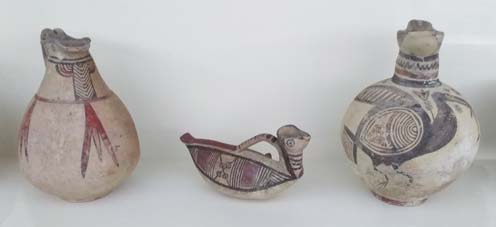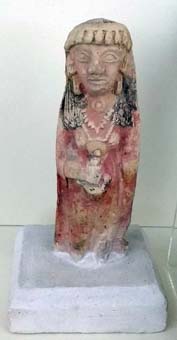Last month I had the opportunity to attend a one-day conference organised by the Chartered Institute for Archaeology’s Archaeological Archives group, with the thought-provoking title ‘Are archaeological archives relevant?’. If the papers from the day are anything to go by, the answer is a resounding ‘yes’ – a fantastic range of research was presented, from studies of historic grain samples to human cremations. I gave a paper on the University of Leeds’ ancient Cypriot collection and how the British Museum’s archives relating to the 1893-94 excavations at Amathus give vital clues to its origins.
There were a number of recurring themes throughout the day, including the issue of storage for these archives and how to make them accessible to a wide range of researchers, but what struck me most was people using archives in ways which their original assemblers couldn’t have foreseen, and hence the need to take a long view in determining what’s relevant and valuable now and into the future. Kath Creed from the Museum of London made an excellent point, that the most exciting thing about archaeology is discovery, and you can make discoveries in an archive – which is a great part of what I spend my time doing. All in all, a fascinating and wide-ranging programme with plenty to think about.
The conference was ideally organised from my perspective, being held at the Birmingham Midland Institute (a very interesting institution in its own right), just a short walk away from the Birmingham Museum and Art Gallery, and with a long break for lunch. I’ve wanted to visit the BMAG’s ancient Cypriot collection for ages, but haven’t quite been able to justify the time and train fare, so to be able to combine it with the conference was perfect. The Museum certainly lived up to expectations; I would have loved to look round its extensive collections in more detail, but after a quick trip to the Edwardian Tearooms, which were as delightful as one would expect, I made my way straight to the gallery which houses the ancient Cypriot collection.
The gallery is fairly traditional in layout, with the objects ranged along the walls in glass cases. It includes a fantastic Bronze Age collection from tombs at Vounous, which came to the Museum via Sir Charles Hyde, the owner of the Birmingham Post, who part-funded the excavations. This mainly consists of stunning Red Polished ware vessels with incised decoration, some with animal heads and other objects added at the rim.

Red Polished vessels from Vounous. © Birmingham Museum and Art Gallery
There were many other highlights, including this Bichrome amphoriskos in characteristic Amathus style; an object which immediately proclaims its origins!

Bichrome amphoriskos with Amathus style decoration. © Birmingham Museum and Art Gallery
I really liked the approach of displaying objects by theme, such as these three exuberant horses and riders…

Figurines of horses and riders. © Birmingham Museum and Art Gallery
…and these three Bichrome vessels, which demonstrate the importance of birds in ancient Cypriot art.

Three Bichrome vessels. © Birmingham Museum and Art Gallery
I was intrigued by the amount of colour remaining on this votive figurine of a woman carrying a bird; there is a similar figurine in the Leeds City Museum collection, but much more worn, and it’s interesting to get an idea of what its decoration might have looked like.

Votive figurine. © Birmingham Museum and Art Gallery
So an extremely enjoyable trip, not least because of the blissfully lengthy train journey from Leeds to Birmingham, which provided a good opportunity to get some writing done. Next stop is Vienna, where my wonderful sister is taking me in May – I hear the Kunsthistorisches Museum has an excellent ancient Cypriot collection!
